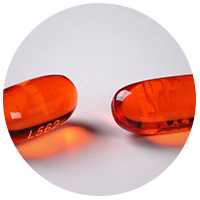Alginates are polysaccharides consisting of mannuronic and guluronic acid units. Cited as algin in some literature, the alginates cover a wide range of products, from alginic acid to salts (sodium, potassium, ammonium, magnesium and calcium alginates) and esters (propylene glycol alginate).
Since the discovery of alginates by Edward Stanford in 1883, commercial production which started in 1927 has now expanded to some 40,000 metric tons per year, world-wide. 30% of this is devoted to the food industry, the rest being used in industrial, pharmaceutical and dental applications. Alginate production is situated in California, the British Isles, Norway, France, Chile, Japan and China.
Alginates are extracted from various species of brown seaweeds (Phaecohyceae) by a multi-step process. A typical extraction process involves first washing and treating seaweed with diluted sulfuric acid (quantitively transforming calcium alginate into alginic acid), extraction by dissolution with alkali, separation of insolubles, then precipitation as the calcium salt, followed by acid washing to recover alginic acid. The salts and esters of alginic acids are obtained by neutralization and esterification, respectively.
Many toxicological and metabolic studies in both animals and humans have proved their safety as food additives. Food grade quality alginates comply with relevant international and national purity specifications.
Alginic acid, its sodium, potassium, ammonium and calcium salts, and propylene glycol alginate have been given INS numbers of 400 to 405 (E400 to E405 in the EU).
To meet the varied needs of customers a range of product grades are available with differing viscosities, gelling properties and particle sizes.


